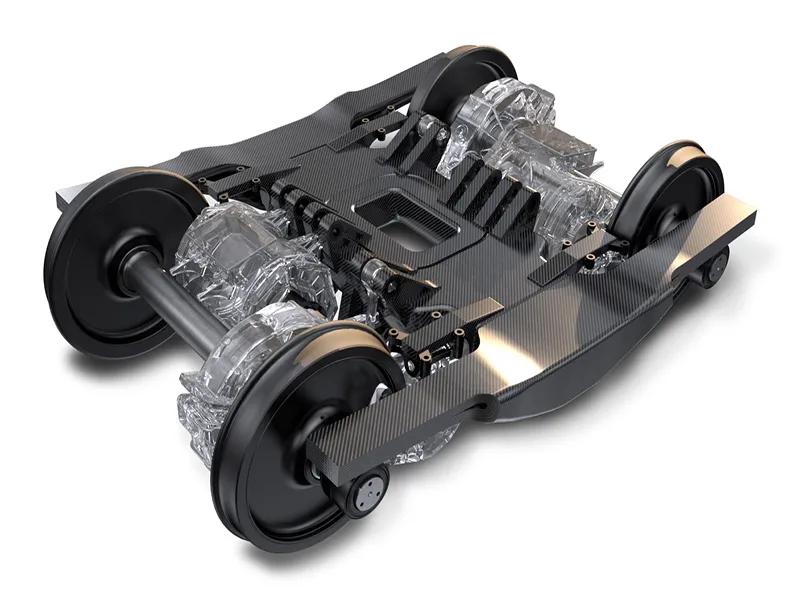HÖRMANN Vehicle Engineering working on a next-generation bogie
Another milestone has been reached in the development of an innovative bogie for rolling stock, with production started on the demo model of the hybridBOGIE longitudinal member. In late 2020, HÖRMANN Vehicle Engineering GmbH, based in Chemnitz, worked closely with its project partner Institut für Konstruktion und Verbundbauweisen gemeinnützige GmbH on production tooling and on devising and refining the manufacturing process to develop a near-production-ready reference component for the longitudinal member. ‘In addition to actual process validation, the longitudinal member component will also be used later in the project for further investigation as well as testing and evaluation of mechanical parameters and suspension characteristics,’ explained Matthias Büttner, project manager at HÖRMANN Vehicle Engineering.
The Development Bank of Saxony launched the hybridBOGIE funding project in 2019. Partners in the project include Institut für Konstruktion und Verbundbauweisen gemeinnützige GmbH (KVB), the Fraunhofer Institute for Machine Tools and Forming Technology (IWU), IMA Materialforschung und Anwendungstechnik GmbH (IMA) and HÖRMANN Vehicle Engineering GmbH (HVE). The project’s objectives are to reduce weight by 75% relative to a conventional bogie, integrate the primary springs, protect against stone chips and incorporate a network of sensors into the frame, devise a degradation model to determine the remaining service life of the fibre-reinforced composite and develop a testing process adapted specifically to the hybrid composite.
Prototype parts manufactured to demonstrate benefits
In the first year of the three-year project, HÖRMANN Vehicle Engineering developed the bogie from hybrid materials and integrated the primary spring as well as the fire safety function. Meanwhile, KVB devised solutions to the problems of stone chips and the integration of the network of sensors for monitoring the condition of the frame. IWU formulated failure criteria and integrated them in the ANSYS software. IMA investigated adjustment factors for calculation against relevant dimensions for the purpose of quality assurance after manufacturing and before the fatigue test.
In 2020, HÖRMANN Vehicle Engineering and KVB came up with a suitable production process for the bogie longitudinal member and the necessary tooling. As is common in the case of prototypes for highly stressed components, an autoclave process was used to cure the fibre-reinforced plastic. IMA performed preliminary ultrasound testing on relevant fibre-reinforced composites in 2020 and optimised frequencies and acoustic attenuation factors. Finally, towards the end of 2020, subcontractor Modellbau Roth GmbH & Co. KG manufactured the tooling for the bogie longitudinal member. ‘All these steps will result in a bogie that exhibits better parameters in terms of function, weight, service life and noise,’ said Frank Salzwedel, managing director of HÖRMANN Vehicle Engineering.
